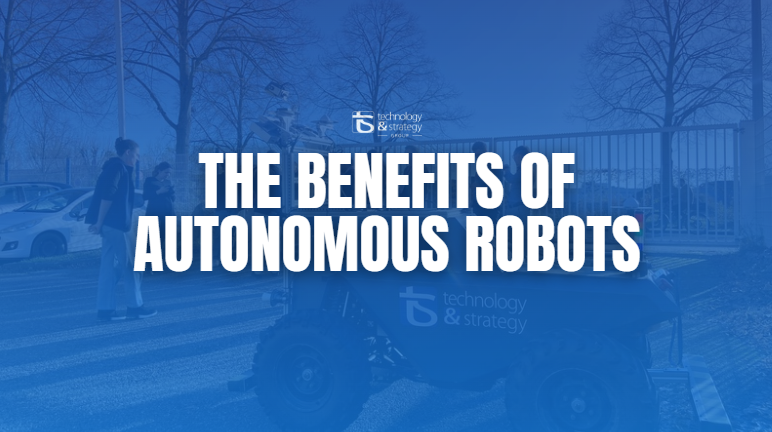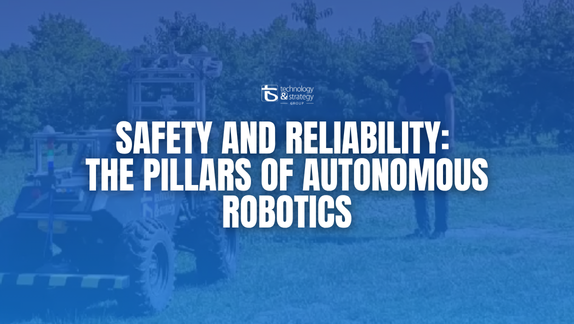Industrial penetration testing represents a specialized security assessment approach designed to identify vulnerabilities in operational technology infrastructures. Unlike conventional IT security evaluations, this methodology requires deep understanding of industrial protocols, physical processes, and safety considerations.
This comprehensive approach evaluates digital and physical security boundaries while analyzing vulnerabilities in legacy systems. The testing encompasses industrial protocols like Modbus, Profinet, and OPC-UA, alongside verification of segregation between IT and OT networks.
"Industrial penetration testing requires a unique balance between comprehensive security assessment and absolute operational integrity. Our approach ensures organizations can identify critical vulnerabilities without compromising production continuity."
- Matthieu Sauvage, Cybersecurity Expert at T&S
The stark differences between conventional IT and industrial penetration testing stem from fundamentally different priorities and risk profiles. Industrial environments demand zero tolerance for operational disruption, requiring predominantly passive and non-disruptive testing methods.
AspectConventional IT PentestIndustrial Penetration TestingPrimary ConcernsData confidentiality and integrityOperational safety and availabilityAcceptable DowntimePlanned downtime often acceptableZero tolerance for operational disruptionTesting ApproachCan use aggressive tools and techniquesPredominantly passive and non-disruptive methodsImpact AssessmentFocused on data exposureFocused on physical process impacts
Penetration testing in industrial environments operates within a complex regulatory landscape that varies by sector and geography. Key frameworks include IEC 62443 for industrial automation, NIST SP 800-82 for control systems security, and NIS Directive for European critical infrastructure.
These assessments require explicit authorization through properly scoped legal agreements that clearly define testing boundaries, acceptable methods, and liability provisions. Critical infrastructure testing often requires additional government notifications or approvals depending on the sector.
Effective penetration testing for industrial environments requires a methodical approach that balances security assessment depth with operational safety. This specialized methodology adapts to unique constraints while providing comprehensive vulnerability identification.
The foundation begins with thorough preparation and risk analysis tailored to industrial contexts. This critical phase involves comprehensive asset inventory including all OT/IT components, communication paths, and protocols. Unlike standard IT assessments, this preparation requires physical site inspections and direct consultation with operational staff.
Development of emergency response procedures ensures immediate containment of any unintended impacts. Establishment of communication protocols with operational teams creates essential safeguards throughout the testing process.
Industrial production environments demand specialized non-intrusive testing methodologies that minimize operational risks. These approaches leverage passive network monitoring to identify systems and communication patterns without active exploitation.
These methodologies allow thorough security assessment without jeopardizing operational continuity—a critical requirement in safety-critical environments.
Industrial vulnerability analysis extends beyond conventional assessments by incorporating evaluation of control logic vulnerabilities and potential process manipulation scenarios. This analysis examines physical security controls integration with digital systems and proprietary industrial protocol implementations.
The multi-layered approach reveals vulnerabilities at the intersection of cyber and physical systems that might remain hidden in conventional IT-focused assessments. Our cybersecurity experts specialize in identifying these complex interdependencies.
Penetration testing applications vary significantly across industrial sectors, each presenting unique challenges and security considerations based on operational characteristics and critical assets.
SCADA and ICS systems form the operational backbone of industrial facilities, requiring specialized testing approaches due to their diversity of proprietary components and real-time operational requirements. These systems often include legacy components with extended operational lifespans of 15-25 years.
Comprehensive SCADA testing encompasses Human-Machine Interface security assessment, historian database evaluation, and RTU and PLC vulnerability testing. Assessment of engineering workstation security and backup mechanisms provides complete coverage of the control architecture.
The energy sector's digital transformation creates complex smart grid environments with highly distributed architecture spanning generation, transmission, and distribution systems. Critical national infrastructure status requires regulatory oversight and specialized compliance approaches.
Testing addresses substation automation security, energy management system vulnerabilities, and smart meter communication protocols. Advanced metering infrastructure creates new attack surfaces requiring specialized assessment techniques. Our work with European energy providers demonstrates the critical importance of comprehensive distribution management system testing.
The proliferation of embedded systems introduces new attack vectors requiring specialized testing approaches for resource-constrained devices. These systems present unique challenges including specialized communication protocols, firmware update mechanisms, and supply chain security concerns.
Effective testing includes firmware extraction and analysis, hardware interface security assessment, and communication protocol verification. Supply chain vulnerability evaluation addresses the growing concern of compromised components in industrial systems.
Understanding unique technologies and protocols forming the backbone of industrial control systems determines the effectiveness of penetration testing in these specialized environments.
Industrial protocols present distinct security challenges compared to standard IT protocols, often prioritizing operational reliability over security. Modbus vulnerabilities include lack of authentication mechanisms and no encryption capabilities leading to cleartext communications.
Profinet security issues encompass configuration vulnerabilities and susceptibility to DoS attacks affecting real-time operations. OPC-UA security considerations include certificate management challenges and complex security configuration requirements.
IT/OT gateways represent critical security boundaries requiring thorough assessment as primary attack vectors for transitioning from corporate networks to industrial control systems. Testing encompasses data diode implementation verification, protocol conversion security assessment, and authentication mechanism evaluation.
Gateway testing includes access control implementation evaluation, traffic filtering effectiveness, and logging capabilities assessment. These components often represent the most vulnerable points in industrial network architectures.
Beyond technical security improvements, comprehensive penetration testing delivers significant business value through risk reduction, regulatory compliance, and operational protection.
Integrated penetration testing directly addresses business risks by identifying vulnerabilities that could lead to production disruption and quantifying potential financial impacts. This approach evaluates cascading failure scenarios across interconnected systems while assessing safety implications of security vulnerabilities.
Evidence-based prioritization for security investments helps executives understand security as a fundamental business risk management activity with direct operational implications rather than merely a technical concern.
"Our industrial penetration testing approach transforms security assessment from a compliance checkbox into a strategic business enabler. We help organizations understand the true operational impact of cyber vulnerabilities."
- Romain Darie, Industrial Systems Expert at T&S
Many industrial sectors face increasing regulatory requirements for security testing and compliance documentation. IEC 62443 compliance for industrial automation, NERC-CIP requirements for power utilities, and NIS Directive compliance for critical infrastructure demand comprehensive testing evidence.
Comprehensive penetration testing provides documented evidence of security diligence, supporting compliance activities and reducing regulatory risk exposure across multiple frameworks.
Industrial penetration testing directly contributes to protecting high-value assets through intellectual property protection and production equipment availability preservation. This protection ensures product quality and safety assurance while maintaining brand reputation and supply chain reliability.
These protections translate directly to business value by ensuring continuity of operations and preventing costly incidents that impact both immediate operations and long-term market position.
Technology & Strategy has developed a distinctive approach leveraging our dual expertise in industrial engineering and cybersecurity to deliver comprehensive security assessments without operational disruption.
Our proprietary methodology combines several innovative approaches including passive analysis techniques that maintain operational integrity and digital twin simulation for invasive testing. Staggered testing phases align with operational windows while real-time monitoring enables immediate test suspension if operational parameters deviate.
This hybrid approach combines limited live testing with extensive simulation, allowing comprehensive security assessments without operational risks associated with traditional penetration testing methodologies.
Our penetration testing teams combine diverse expertise including industrial automation specialists with OT background and cybersecurity experts with IT penetration testing certification. Sector-specific engineers provide specialized knowledge in energy, manufacturing, and automotive applications.
This multidisciplinary composition ensures our teams understand both technical security aspects and operational context—a combination rarely found in conventional security firms. Our approach leverages expertise from specialized industrial experts across multiple domains.
Our reporting approach focuses on business impact and practical remediation with executive summaries articulating clear risk in business terms. Technical findings include operational context and impact assessment with remediation recommendations considering operational constraints.
Prioritization based on risk impact rather than purely technical severity ensures security findings translate into actionable improvements that align with operational realities and business priorities.
A major European energy provider operating multiple power generation facilities faced increasing regulatory pressure and cybersecurity concerns related to their operational technology infrastructure. The complex environment included legacy SCADA systems, modern distributed control systems, and various IT/OT integration points.
Key challenges included 24/7 operational requirements with zero tolerance for disruption, diverse technology ecosystem spanning 30+ years, and complex regulatory compliance requirements across multiple jurisdictions.
Our approach leveraged T&S's industrial penetration testing methodology with specific adaptations for the energy sector. The comprehensive assessment included three-week preparation phase with asset inventory development and process criticality assessment.
Four-week non-disruptive assessment phase featured passive network monitoring and configuration reviews of control systems. Controlled testing phase during scheduled maintenance windows included digital twin testing for high-risk scenarios and targeted vulnerability verification.
The penetration testing program delivered significant value across multiple dimensions with 14 critical vulnerabilities identified that could potentially impact operational capability. Unauthorized remote access pathways through poorly secured IT/OT gateways were discovered and remediated.
Business impact included preventing potential regulatory penalties estimated at €2.5M and eliminating vulnerabilities that could have led to 48 hours of operational downtime. The assessment provided documentation satisfying insurance requirements for cyber coverage and enabled accurate risk quantification.
A three-year security improvement roadmap aligned with operational constraints was developed, demonstrating how properly executed industrial penetration testing delivers significant business value while respecting operational constraints.
Effective industrial penetration testing requires thorough preparation to maximize value while minimizing operational risk through strategic planning and proper provider selection.
Successful testing begins with clearly defined objectives and scope including specific systems identification and acceptable testing methods. Preliminary asset inventory documents all in-scope components while identifying critical operational assets requiring special handling.
Emergency procedure establishment develops incident response plans and communication protocols for testing-related issues. Operational team preparation includes staff briefing on testing activities and coordination with maintenance schedules to obtain necessary stakeholder approvals.
Choosing the right penetration testing provider requires evaluating several critical factors including industrial expertise and dual IT/OT competence. Sector-specific experience and methodological approach evaluation ensure proper understanding of industry requirements.
The right provider demonstrates not just technical security expertise but fundamental understanding of industrial operations and their unique constraints. Our safety engineering expertise provides this essential industrial context.
Maximizing penetration testing value requires effective integration of results into broader cybersecurity strategy through business impact-based prioritization of identified vulnerabilities. This approach evaluates operational consequences and regulatory implications while assessing remediation complexity and costs.
Phased remediation approach addresses critical vulnerabilities with immediate operational risks first while implementing quick wins with high security impact and low operational disruption. Complex changes align with maintenance schedules while developing compensating controls for long-term remediation issues.
Continuous improvement cycle establishment includes regular reassessment scheduling and monitoring for potential vulnerability exploitation. Building penetration testing into change management processes ensures ongoing security improvement rather than compliance-only exercises.
As industrial systems become increasingly connected, the security boundaries between IT and OT continue to blur, creating new attack vectors that traditional approaches fail to address. Comprehensive penetration testing specifically adapted to industrial environments provides critical vulnerability identification before malicious exploitation.
The unique challenges of industrial penetration testing demand specialized expertise combining security knowledge and industrial engineering understanding. This dual competence enables organizations to identify and remediate vulnerabilities while respecting operational constraints and safety requirements.
Implementing structured industrial penetration testing approaches allows organizations to improve security posture while demonstrating regulatory compliance and protecting critical assets. This comprehensive approach ensures business continuity in an increasingly hostile threat landscape.
For organizations beginning their industrial security journey, we recommend starting with comprehensive security assessment to identify critical vulnerabilities, followed by phased penetration testing aligned with operational realities. This strategic approach ensures maximum security improvement while maintaining essential operational continuity.
Our specialized approach at Technology & Strategy combines industrial engineering expertise with advanced cybersecurity capabilities, delivering comprehensive assessments that protect critical infrastructure while enabling business growth and innovation.


Discover the winners of the T&S Sponsorship Program 2025. Technology & Strategy supports 7 organizations driving social and environmental impact across Europe.
READ MORE
Discover how autonomous robots developed at Englab’s R&D Center can positively impact the environment and economy through advanced and sustainable technologies.
READ MORE
Discover how Englab's R&D Center ensures the safety and reliability of autonomous robots through advanced technologies and strict protocols.
READ MORE